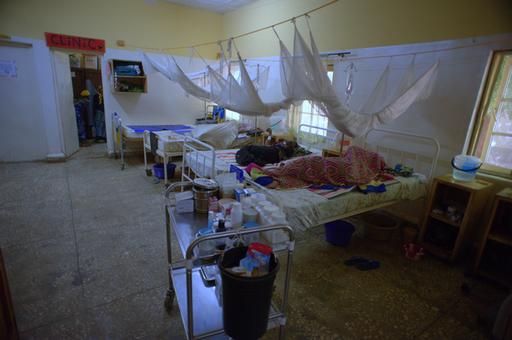Chelation therapy for treatment of Lead Poisoning
What are the symptoms of heavy metal or lead poisoning?
The classic signs and symptoms are loss of appetite, weight loss, anemia, abdominal pains, body weakness, renal damage. Neurological symptoms could be as severe as to affect the level of consciousness and cause convulsions, followed by death, which is what our teams witnessed in patients in Zamfara state. Adults can also present all of the above symptoms or be asymptomatic.
How do you treat patients?
Treatment is being done at this time with an oral drug called Dimercaptosuccinic Acid (DMSA or succimer) The treatment is chelation therapy and the first round of treatment takes 19 to 28 days. The drug binds the heavy metals in the patient's blood. The resulting ‘chellates’ are water-soluble, allowing it to be excreted harmlessly in the urine. In extremely bad cases of poisoning, a second treatment course, or even third and fourth round of treatment can be required.
What are the side effects or safety concerns with chelation therapy?
The specific drug that we are using is a relatively safe drug, which is why it has been chosen. However, all drugs have some side effects. The most common side effects include nausea, vomiting, diarrhea and appetite loss and loose stools. Serious rashes can occur in a small percentage of cases. In some cases you may see also see elevated liver enzymes, the significance of which is not clear, although it can be an indicator of liver problems. All the patients under treatment are having close medical monitoring for the first round of treatment, including regular blood tests throughout the 28 day period.
What are the long term consequences of poisoning?
The most significant is of course death. However, lead poisoning can potentially have a lot of long term consequences with continued exposure and high lead levels in the blood. Children are at risk of delayed and permanently stopped neurological development. In both adults and children, high blood pressure, kidney damage, anaemia, neuro-behavioural changes including irritability, poor attention span, lethargy, loss of memory/ hallucinations, significant muscle weakness can also be an issue. For adults, other potential consequences include infertility for men and still-births for women.
Earlier this year, cases of lead poisoning in children and adults were confirmed in five villages in Zamfara state, northwestern Nigeria. Investigations conducted in April and May by Nigerian authorities and Médecins Sans Frontières (MSF) teams, reported 163 deaths suspected to be linked to lead poisoning. This estimate was based on information provided by villagers and health workers, as well as deaths recorded in MSF supported health facilities. Since May 2010 however, two more villages have been identified with high lead levels, bringing the total to seven known contaminated villages.
“This increase shows that the problem is probably more widespread than we originally believed, and that the scope must continue to be investigated. The situation demands coordination by Nigerian authorities and international organisations to urgently address this unprecedented situation,” said Gautam Chatterjee, MSF Country Manager in Nigeria.
Since May, MSF, with the support of local authorities, has been providing life-saving chelation treatment to young children and breast-feeding mothers, who are most vulnerable to lead toxicity. MSF will continue to provide emergency treatment to prevent deaths and mitigate serious medical consequences in patients. However, the treatment provided is futile if children return to contaminated sites and continue to be exposed to high lead levels, as they may suffer again the consequences of lead poisoning. Villages known to be contaminated must urgently be cleaned up (remediated), so that both children and adults’ exposure to lead is prevented.
Although two of the seven identified villages have been remediated by an environmental clean-up organisation, much more needs to be done. The local population must also receive on-going health education talks about the risks associated with exposure to lead poisoning.
Source of lead poisoning
The lead poisoning is a consequence of villagers practicing small-scale gold extraction from lead-containing ore. The processing of the ore involves crushing and drying, often inside the homes of villagers, resulting in the contamination of soil and increasing the risk of lead poisoning.
MSF medical treatment
Almost 400 children and over 100 breast-feeding mothers have been treated with chelation therapy in the two medical centres managed by MSF. The treatment facilities are located in Anka town and in Bukkuyum town (Zamfara State). The treatment is only effective if patients do not return to contaminated sites, otherwise they are at risk of recontamination.
Remediation
Remediation of the villages (remediation is the decontamination process involving the removal of affected soil) is a lengthy and costly process and only two of seven villages have been remediated thus far. Remediation is currently being managed by an environmental clean-up agency Terragraphics, funded in part by the Blacksmith Foundation.




